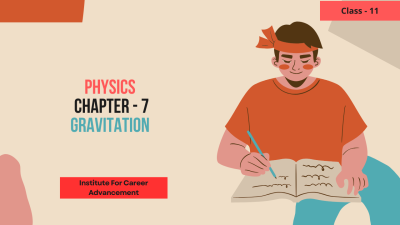Course description
In your Class 12 physics curriculum, Ray Optics and Optical Instruments takes center stage. This course explores how light interacts with matter, specifically focusing on its behavior as rays traveling in straight lines. Here's what you'll delve into:
Core Concepts:
Light as Rays: Ray optics is a simplified approach to understanding light propagation. Here, light is treated as traveling in straight lines called rays. This approach, while not entirely accurate for all light phenomena, is very effective for analyzing reflection, refraction, and image formation by optical instruments.
Reflection and Refraction: A key focus of the course is understanding how light interacts with surfaces and changes its direction. You'll learn the laws of reflection that govern how light bounces off mirrors, and the concept of refraction which explains how light bends as it passes from one medium (like air) to another (like water).
Lenses and Image Formation: Lenses are curved pieces of transparent material that can converge or diverge light rays. You'll explore the properties of convex and concave lenses, understand how they manipulate light rays, and learn how different lens types can form real or virtual images. Ray diagrams will be a crucial tool for analyzing lens behavior and image formation.
Optical Instruments: The course culminates in studying various instruments that utilize lenses, mirrors, and sometimes prisms to achieve specific functions. You'll explore instruments like:
Microscopes: Magnify tiny objects for detailed observation.
Telescopes: Gather and focus light from distant celestial objects.
Human Eye: Understand how the eye functions as a natural optical instrument with a lens system and retina for vision.
Other instruments like eyeglasses, cameras, and projectors may also be covered.
Applications and Broader Context:
Ray optics principles have numerous applications beyond scientific understanding. You'll explore how these concepts are used in designing lenses for eyeglasses, camera lenses, and reflective telescopes.
The course can also touch upon the limitations of ray optics and introduce the concept of wave optics, which provides a more complete picture of light behavior.
আপনার দ্বাদশ শ্রেণির পদার্থবিজ্ঞান পাঠ্যক্রমে, রে অপটিক্স এবং অপটিক্যাল ইন্সট্রুমেন্টস কেন্দ্রবিন্দুতে রয়েছে। এই কোর্সটি অনুসন্ধান করে যে কীভাবে আলো পদার্থের সাথে মিথস্ক্রিয়া করে, বিশেষত সরলরেখায় ভ্রমণকারী রশ্মি হিসাবে তার আচরণের উপর দৃষ্টি নিবদ্ধ করে। আপনি যা অনুসন্ধান করবেন তা এখানেঃ
মূল ধারণাগুলিঃ
রশ্মি হিসাবে আলোঃ রশ্মি আলোকবিদ্যা হল আলোর বিস্তার বোঝার একটি সরলীকৃত পদ্ধতি। এখানে, আলোকে সরলরেখায় ভ্রমণ হিসাবে বিবেচনা করা হয় যাকে রশ্মি বলা হয়। এই পদ্ধতিটি, সমস্ত আলোর ঘটনার জন্য সম্পূর্ণ সঠিক না হলেও, আলোকীয় যন্ত্র দ্বারা প্রতিফলন, প্রতিসরণ এবং চিত্র গঠন বিশ্লেষণের জন্য খুব কার্যকর।
প্রতিফলন এবং প্রতিসরণঃ আলো কীভাবে পৃষ্ঠের সাথে মিথস্ক্রিয়া করে এবং তার দিক পরিবর্তন করে তা বোঝা কোর্সের একটি মূল ফোকাস। আপনি প্রতিফলনের নিয়মগুলি শিখবেন যা আয়না থেকে আলো কীভাবে লাফিয়ে ওঠে তা নিয়ন্ত্রণ করে এবং প্রতিসরণের ধারণাটি যা ব্যাখ্যা করে যে আলো কীভাবে এক মাধ্যম (বাতাসের মতো) থেকে অন্য মাধ্যমে যাওয়ার সময় বাঁক নেয়। (like water).
লেন্স এবং চিত্র গঠনঃ লেন্স হল স্বচ্ছ উপাদানের বাঁকা টুকরো যা আলোর রশ্মিগুলিকে একত্রিত বা বিচ্ছিন্ন করতে পারে। আপনি উত্তল এবং অবতল লেন্সের বৈশিষ্ট্যগুলি অন্বেষণ করবেন, বুঝতে পারবেন যে কীভাবে তারা আলোর রশ্মি পরিচালনা করে এবং শিখবেন যে কীভাবে বিভিন্ন ধরনের লেন্স বাস্তব বা ভার্চুয়াল চিত্র তৈরি করতে পারে। লেন্সের আচরণ এবং চিত্র গঠন বিশ্লেষণের জন্য রশ্মি চিত্রগুলি একটি গুরুত্বপূর্ণ হাতিয়ার হবে।
অপটিক্যাল যন্ত্রঃ কোর্সটি বিভিন্ন যন্ত্র অধ্যয়নের মাধ্যমে শেষ হয় যা লেন্স, আয়না এবং কখনও কখনও প্রিজম ব্যবহার করে নির্দিষ্ট কার্য সম্পাদন করে। আপনি এই ধরনের যন্ত্রগুলি অন্বেষণ করবেনঃ
মাইক্রোস্কোপঃ বিস্তারিত পর্যবেক্ষণের জন্য ক্ষুদ্র বস্তুগুলিকে বিবর্ধিত করুন।
টেলিস্কোপঃ দূরবর্তী মহাজাগতিক বস্তু থেকে আলো সংগ্রহ ও কেন্দ্রীভূত করা।
মানুষের চোখঃ লেন্স সিস্টেম এবং দৃষ্টিশক্তির জন্য রেটিনা সহ একটি প্রাকৃতিক অপটিক্যাল যন্ত্র হিসাবে চোখ কীভাবে কাজ করে তা বুঝুন।
চশমা, ক্যামেরা এবং প্রজেক্টরের মতো অন্যান্য যন্ত্রগুলিও ঢেকে রাখা যেতে পারে।
প্রয়োগ এবং বিস্তৃত প্রসঙ্গঃ
রশ্মি আলোকবিজ্ঞানের নীতিগুলির বৈজ্ঞানিক বোঝার বাইরে অসংখ্য প্রয়োগ রয়েছে। চশমা, ক্যামেরা লেন্স এবং প্রতিফলিত টেলিস্কোপের জন্য লেন্স ডিজাইনের ক্ষেত্রে এই ধারণাগুলি কীভাবে ব্যবহৃত হয় তা আপনি অন্বেষণ করবেন।
কোর্সটি রশ্মি আলোকবিজ্ঞানের সীমাবদ্ধতাগুলি স্পর্শ করতে পারে এবং তরঙ্গ আলোকবিজ্ঞানের ধারণাটি প্রবর্তন করতে পারে, যা আলোর আচরণের আরও সম্পূর্ণ চিত্র সরবরাহ করে।



















